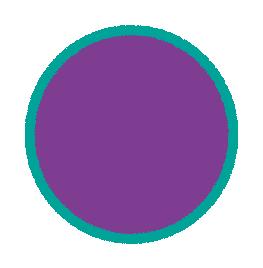


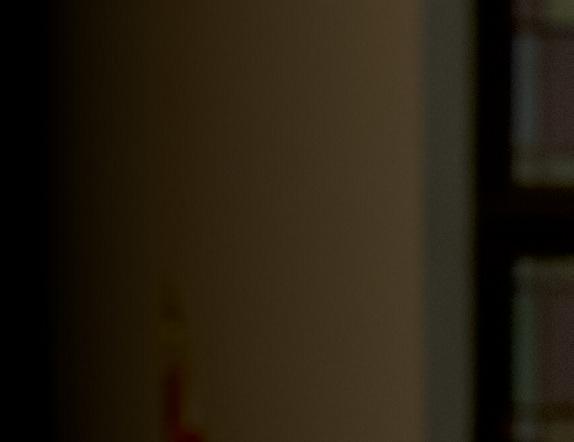



















“Alvernia’s really helping to change my future. This degree, this ‘comeback’ is the open door for whatever comes next. That’s worth every penny, every sleepless night.”
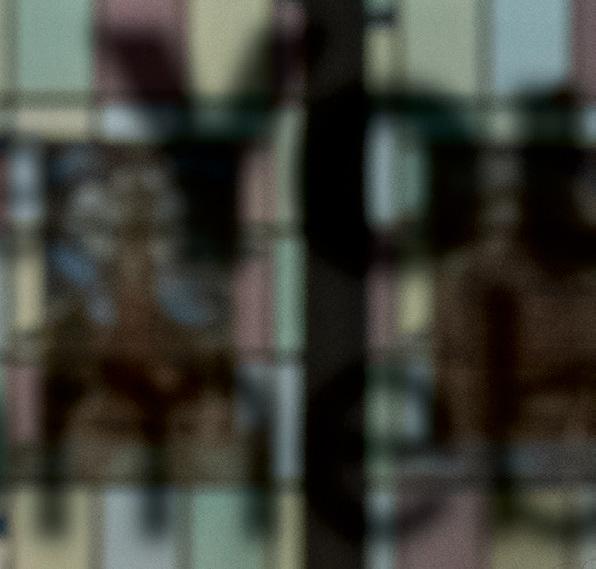
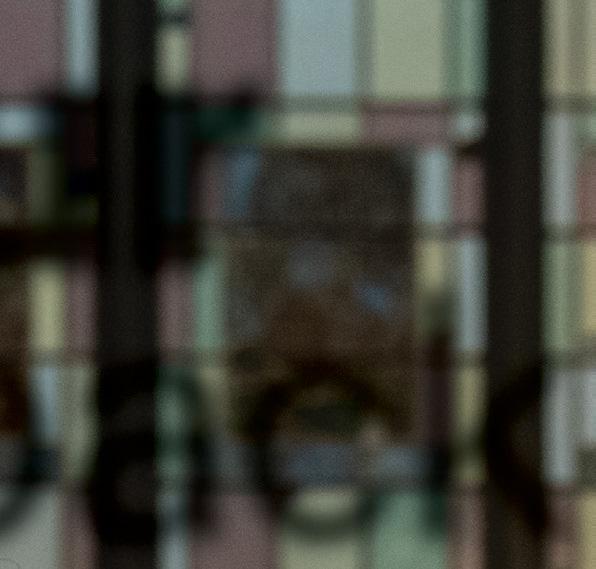

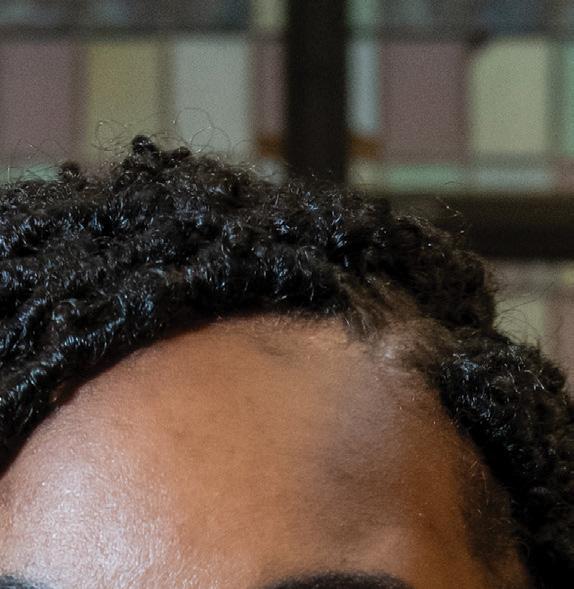


*Women2Women Membership tuition discounts are available on select Alvernia graduate and adult education programs. Not all programs qualify. Inquire for more information. Create Your Comeback at Alvernia.edu/Comeback


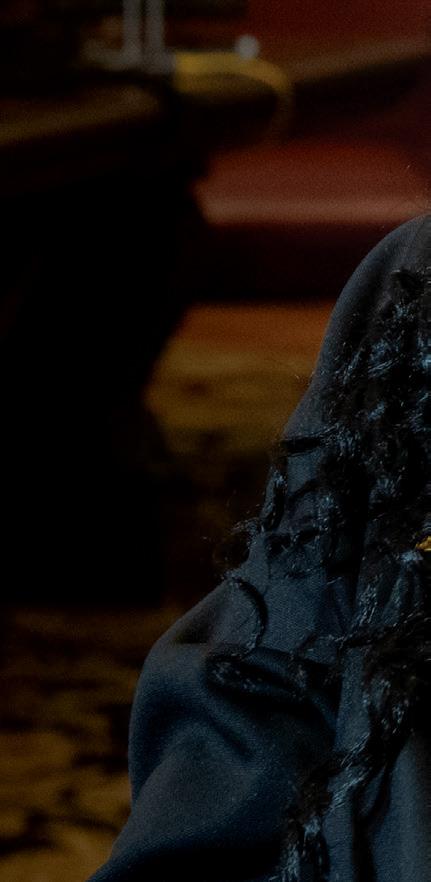


— English Bradley ‘26 Online Business Administration and Management


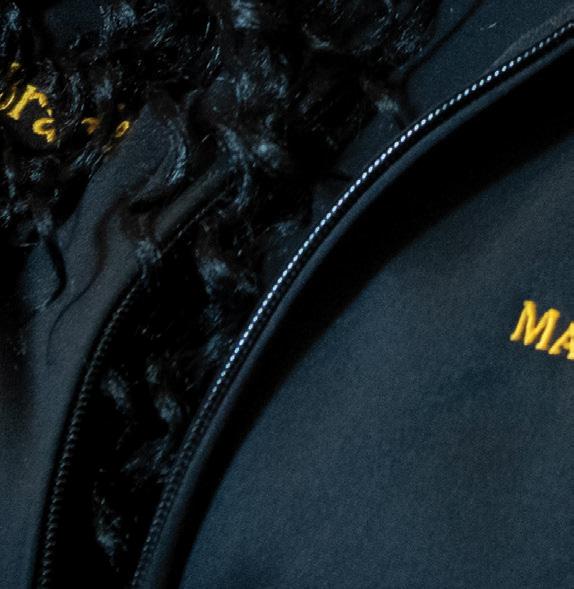
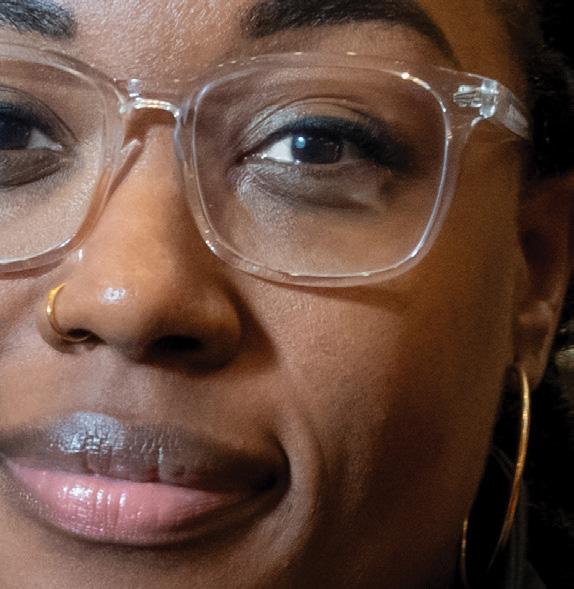




Kirsten P. Haas, Managing Editor 606 Court Street • Reading, PA 19601 greaterreading.org/women2women • 610.376.6766
Women2Women Council: Tracy Parmer, Chairwoman Rosa Arroyo-Vega, Kristi Bonanno, Tracey Ciesnolevicz, Laurie Grube, Katie Johnsen, Carissa Johnson, Sarah McDaniel, Jes Prutzman, Alyssa Redding, Brenda Roasdo, Erika Ruelas, Adelle Schade, Dennie Smith, Jackie Stiles, Emma Rose Strohl, Ruthann Woll
Women2Women is Greater Reading Chamber Alliance’s catalyst for developing women leaders and connecting women from diverse backgrounds to learn, share ideas, and mentor each other. W2W offers a forum for women to create connections, gain knowledge, and build strategic alliances to foster their personal potential and career advancement. Joining the network is open to all who support women and Women2Women Magazine is a publication of the Greater Reading Chamber Alliance.
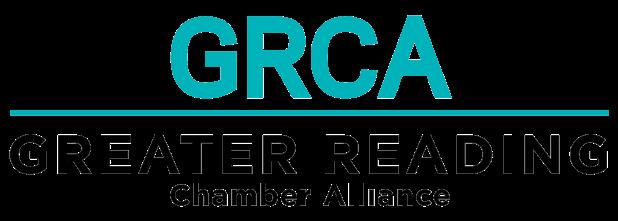
To join: W2W@greaterreading.org Stay connected: Greaterreading.org/women2women

BerksWomen2Women berks_w2w Berks Women2Women

Title Sponsors
Kingsview Partners
Penn State Health St. Joseph
Diamond Sponsors
East Penn Manufacturing Company, Inc.
Penske Truck Leasing
Platinum Sponsors
Alvernia University
Highmark Blue Shield
Our Konnection
Reading Hospital Tower Health
Reading Truck Body
Gold Sponsors
Bent Limb Farm
Berks County Living
Customers Bank
EnerSys
First National Bank
Fulton Bank
Grey Girl Photography
Herbein + Company, Inc.
Swag Sponsor
Assured Partners
De Mujer a Mujer
Berks Community Television
Women In Business
Diamond Credit Union
GAGE Personnel
Irish Creek Construction
Met-Ed/A FirstEnergy Company

21 Creating Your Beehive: Circles of Influence Across Generations of Women
23 When Is the Right Time to Seek Help for Mental Health?
25 Be Brisk and Assess Your Cancer Genetic Risk
28 Small Shots, Big Impact

Kozloff Stoudt Attorneys
Lala Glam Events
M & T Bank
RKL LLP
Tompkins Community Bank
VA Productions, Inc.
Visions Federal Credit Union

the Generation Gap: The Power of Intergenerational Networking © 2025 All rights reserved. No portion of this publication may be reproduced electronically or in print without the expressed written permission of the publisher.
Magazine is published quarterly by Hoffmann Publishing Group • Reading, PA HoffmannPublishing.com •
Fall is the season of the autumnal equinox, a time when day and night are nearly equal. Nearly.
Elsewhere, we see the same struggle to maintain balance whether it’s summer flowers on their final bloom while the leaves slowly turn colors before drifting to the ground or spontaneous summer fun slowly replaced with scheduled activities like school, sports or work events.

We readily accept that the seasons change and with that change, balances shift. So why is it so difficult for us to accept shifting balances or even no balance in our own lives?
Well, we explore that very theme in this issue. From the keynote theme of the 2025 Evening of Empowerment to parenting to taking care of your mental as well as physical health, we explore:
• How to reframe leadership and own your power with… (no spoilers!)
• The joyful but honest challenges of parenting
• The benefits of building a personal beehive with women across generations
• The importance of self-care, both physical and mental
Every article in this issue touches on some aspect of balance in women’s lives and while it is natural to want a single answer, the very point of this issue is that there is no single answer. The answer is different for each individual person and likely, that answer changes with circumstances and environment.
Explore the possibilities with us and embrace whatever balance (or not) means for you and to you Women2Women is here. With you.
Kirsten P. Haas Managing Editor, W2W Magazine
As I read through all the articles in preparing this issue for print, I thought back to times in my life when I struggled to strike the right balance.
I thought about prior performance appraisals (because there is no more objective measurement of who you are as a person than a scale of “one” to “five,” with “one” being the worst and “five” being the gold standard for getting the 5% raise that was predetermined in the annual budget meeting eight months prior…sorry, I’m rambling) and the various comments I received over the years:
• You need to soften your approach.
• You are clear and concise in your communications.
• You respond promptly to emails and phone calls.
• You need to be more available after work hours.
• Your approach is very black and white.
• You are very decisive.
And so on, etc. I can recall on at least one occasion being so confused and frustrated by the contradictory feedback, that I blurted out, “Why don’t you just tell me who you want me to be?”
Of course, the same situation has occurred in my personal life as well. Although, there is no documentation of said instances, I have blurted out the same statement, “Why don’t you just tell me who you want me to be?”
Well, friend, the truth is that while you can be told who to be, you will not find your balance until you decide who you want to be. Feedback is fine, in fact, feedback from co-workers, family, friends can help us understand what we do well and what needs work. But stop chasing an ideal. Stop chasing perfection. Stop beating yourself up.
I still struggle but I am more comfortable with what makes me, me, and I accept that there are things I will always have to work on. That is my balance. What’s yours? 2

If you’ve ever been part of a committee trying to plan something meaningful, you know the feeling: the excitement, the pressure, the “how do we top last year?” moment. That’s exactly what the Women2Women (W2W) Research & Development Committee experienced when it came time to select the keynote topic for this year’s Evening of Empowerment.
We knew it had to be bold. Relevant. Something that would light a spark, not just for one night, but long after the chairs were stacked and the lights were turned off. That’s when the theme emerged, “Do No Harm. Take No Crap. Own Your Power.”
A bold statement capturing the delicate balance women in leadership navigate every day.
The committee didn’t start with answers, we started with questions:
• What are women in our community really talking about right now?
• What are they feeling but maybe not saying out loud?
• Where are the friction points, the moments we shrink when we should rise, or go along with the crowd when we should speak up?
empathy, clarity, and courage. We kept circling back to the same goal: how can we help women show up more fully, not as a version that fits the mold, but as their whole selves? From that point, everything started clicking.
And here’s the thing, the selection of theme wasn’t a top-down decision. The W2W R&D committee is made up of women just like you. Every voice mattered. Every perspective helped shape where we landed. If you’re reading this and you’ve ever wondered whether you have a voice in this space, you do. Truly. We’re listening, and we hope that intention is reflected in this event.

From the beginning, the committee was clear on one thing: we wanted our keynote to reflect us. Not just us as professionals or leaders, but us as whole individuals, navigating the balance of being strong without being “too much”; being kind without being walked on; and being powerful without apology.
That’s where the theme came from, a phrase that gave us goosebumps and perfectly captured the delicate balance women navigate in leadership roles. How many of us have tried to lead without being labeled, or assert ourselves without worrying about whether we’re coming on too strong?
As we started unpacking it all, we saw just how real the impossible standards are for women in leadership. Show strength, and you’re seen as cold. Show compassion, and you’re perceived as weak. And heaven forbid you challenge the room and push back–now you’re “difficult.”
But what if we redefined what power even means?
That question set the tone for everything else. Our committee discussions were thoughtful, sometimes raw, but always honest. We explored the idea of power not as one of dominance or control, but as something liberating. Something deeply rooted in
We invited Dr. Katie Sandoe to deliver this year’s keynote (and don’t worry, you’ll get to read more about her soon!). What we loved about her was not merely her credentials, but her message. She’s helping women push past old frameworks and reclaim what it means to lead with both warmth and strength. The committee was intentional about choosing a topic that wasn't simply inspirational, but actionable. We don’t want anyone to leave the event thinking, “Well, that was a nice speech.” We want women to walk out of that room taller, not just in heels, but in confidence. We want this experience to be a mirror, not a mask. We want the event to be something that reflects who we are and who we’re becoming.
Together, Dr. Sandoe will guide us through limiting beliefs that keep us stuck. She will challenge the “too much” narrative and give us language, yes, actual tools, and a practical mantra to speak up, take up space, and stop apologizing for having a voice.
We can’t wait to see you at the 2025 Evening of Empowerment. Bring your whole self: the strength, the vulnerability, the humor. Laugh with us. Learn with us. Most importantly, leave the event ready to claim your power every day, in every room you enter. Owning your power isn’t about perfection; it’s about courage, authenticity, and refusing to shrink.
Let this be the moment you step fully into your own story, authentically and unapologetically. 2


By Dennie Smith Director of Business Development, Peak Capital, Inc. W2W Research & Development Committee Chair

Several years ago, my hubby attended a work event with me and as we were driving home, made a passing comment: “You know, it’s funny…I just realized there’s a Work Katie and a Fun Katie.”
At first, I chuckled. And then, it hit me…hard.
He was right. Without realizing it, I had been shapeshifting, editing parts of myself to fit the mold of what I thought a leader was supposed to look like and to act like.
The mold I’d been following wasn’t something I’d consciously chosen. It was one that I absorbed from decades of cultural messages, observing other leaders, and working across industries. The unspoken definition of leader that I was mimicking, reflected one of power over others, dominance, winning, control. Mostly masculine. Mostly rigid.
And here’s the kicker.
In trying to be that kind of leader, I was giving away my own power
That moment became the beginning of a journey: a journey back to me. I spent years unlearning and relearning what a powerful leader looks like for me, not what culture says it should look like for me.
Along the way, I noticed something heartbreaking: other women were doing the same thing. Shrinking. Modifying. Segmenting. Trying to “fit in” to a model of leadership that demanded they set aside the very parts of themselves that made them magnetic in the first place.
That realization lit a fire in me. It became my mission to challenge how we define power, to help women redefine it, reclaim it, and live it fully.
To understand what and why this was happening, not only to me but other women too, I went back to the childhood messages we
receive. Story after story shared the same intersecting point: the “too much” stigma.
Too smart.
Too loud.
Too bold.
Too energetic.
Too intimidating.
Too silly.
Too serious.
[Insert your own “too much” story here. I know you have one.]
In my younger years, I’d shrink when I hear those words. I’d dial back my energy, dim my light, lower my voice, sometimes even shrink my stature. I sanitized the parts of me that felt too bright, too different, too…me.
It reminds me of a quote from Alice in Wonderland: “You’re not the same as you were before... You were much more... muchier... you’ve lost your muchness.”
For a long time, I did lose my muchness.
But here’s what I know now: the very things that make us “too much” are often the keys to our power. These days, my “muchness” is my superpower. On stage, it’s the bold colors, the playful-yet-serious delivery, the intellect wrapped in wit, the “doctor and dork” blend that is unapologetically me.
And that’s exactly what I want for every woman reading this: to stop seeing your “too much” as something to hide, and to start seeing it as the source of your power.
This isn’t just my story. It’s backed by research.
One of the biggest traps that women face is what’s known as the double bind. In leadership, we’re often positioned to choose either warmth or competence — but show too much warmth and you risk being seen as less capable. Show too much competence and you risk being seen as cold or unlikeable. It’s a lose-lose that forces many women into a constant, exhausting balancing act.
The result? We get a leadership environment where women are subtly (and sometimes blatantly) encouraged to choose one lane. Be nurturing and approachable or be results-driven and respected but heaven forbid you be both.
This isn’t merely unfair; it’s power-draining. It keeps women from showing up as their full selves and from leading in the rich, multifaceted ways of which we’re capable.
The truth is, we don’t have to choose.
We can be warm and competent. Graceful and bold. Feminine and formidable.
When we stop playing by someone else’s power rules, we change the game entirely. No, scratch that. We step out of the game altogether.
Because life isn’t a game.
Graduate school was where I first started to see the intersection of women and power and the culturally limited perspective that keeps so many women in a box. My Master’s and Doctoral research focused on the lack of representation of women in the highest levels of leadership, including business and politics. Once I saw the disparity in those spaces, I started to see it everywhere: education, religion, community leadership, in the rooms where the big decisions are made.
It wasn’t that women lacked the ability or the drive. It was that the model of power those spaces rewarded didn’t match the strengths, values, and approaches many women bring to the table.
That’s when I started redefining power for myself and later, for the women I work with, through what I call the P3 Model:
1. Power Within. Your internal strength, confidence, and self-trust. The deep knowing of who you are and what you stand for.
2. Power To. Your ability to act, to make things happen, and to influence outcomes in ways that align with your values.
3. Power Shared. Your capacity to lift others up, to collaborate, and to create collective impact.
P3 power is expansive, inclusive, and deeply authentic. It doesn’t require you to play small or play by the old rules. Heck, it’s not about “playing” at all. It asks you to step fully into yourself and to use your power in ways that feel true to you
Let’s “Do No Harm. Take No Crap.” Together
The title of my keynote was inspired by Elizabeth Lesser’s book Cassandra Speaks: When Women are the Storytellers, the Human Story
Continued on page 8
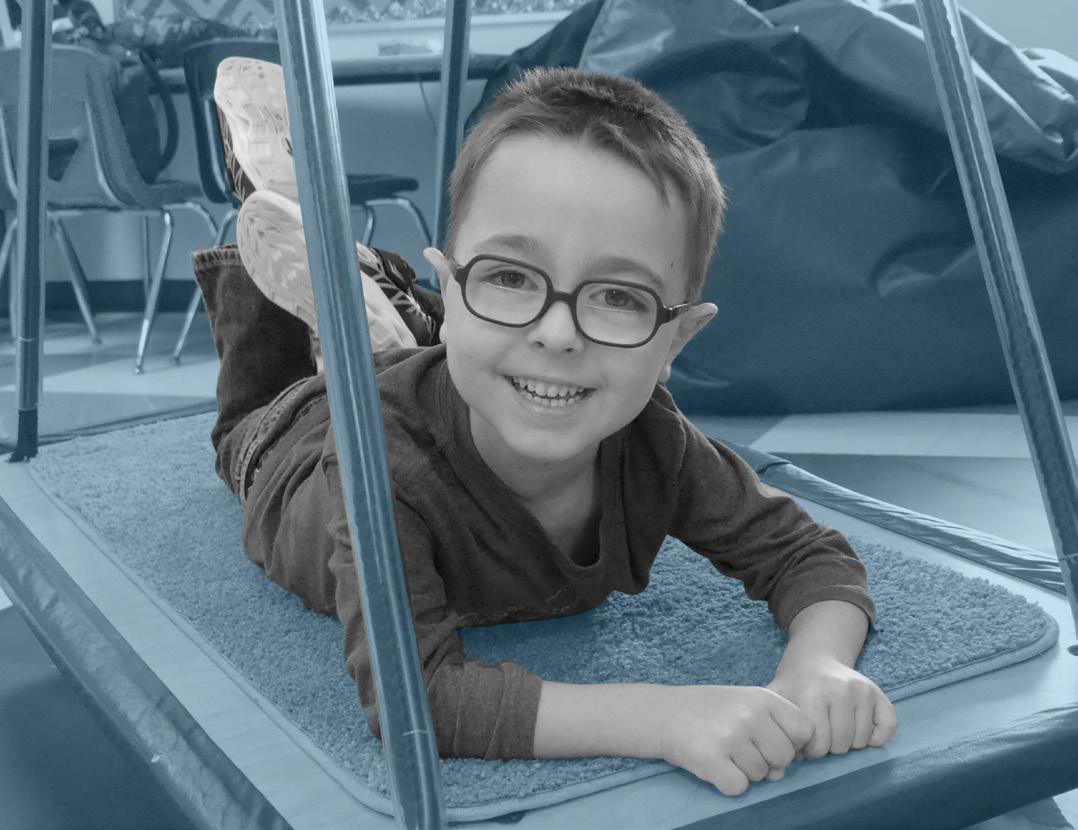


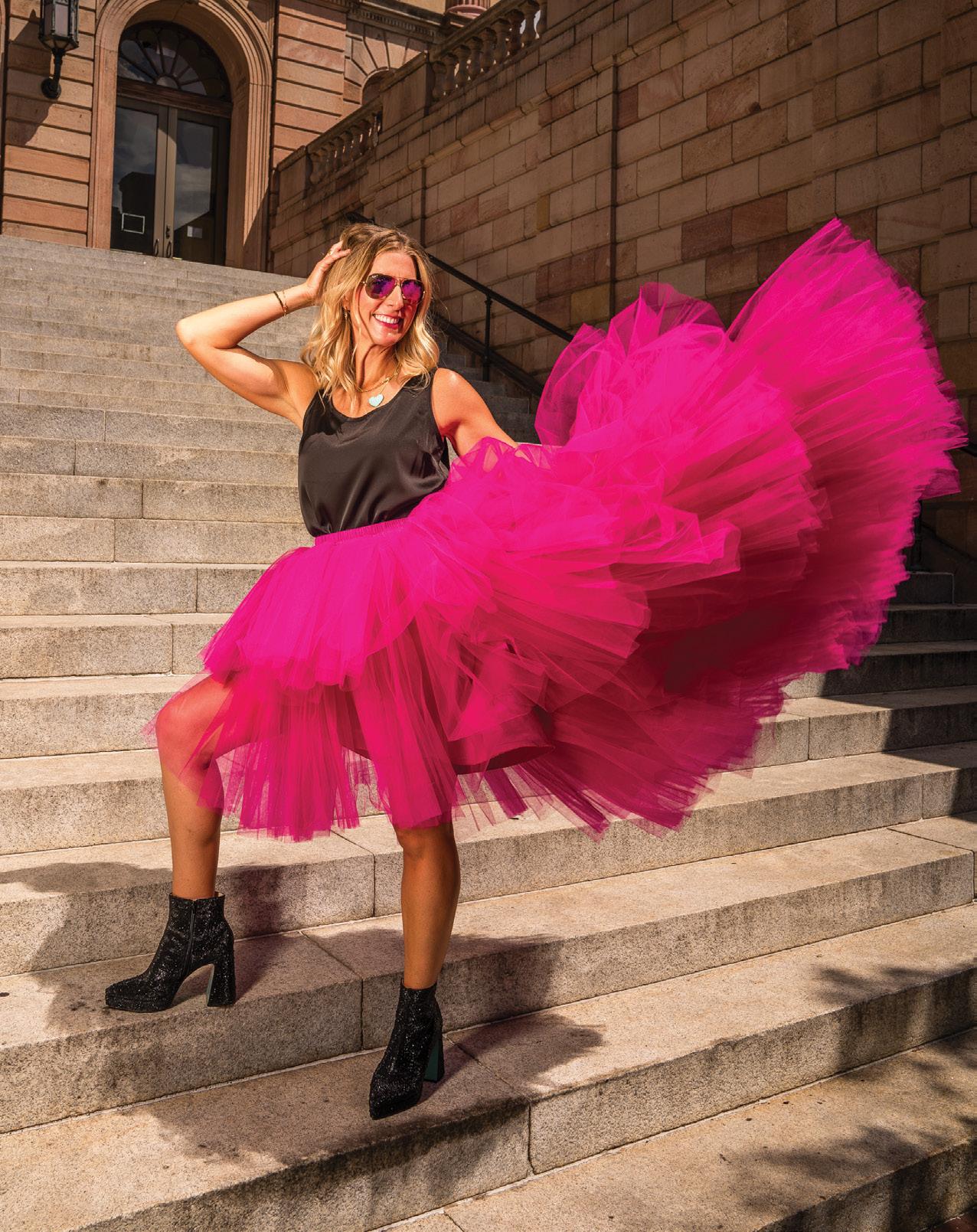
Changes. In it, she describes the Tian Tan Buddha in Hong Kong, a massive, seated Buddha holding one hand up in a gesture of strength and the other palm open, signaling openness and welcome.
For me, it became the perfect metaphor for leadership and life: Do No Harm: Lead with grace, compassion, and integrity.
Take No Crap: Hold strong boundaries, stand in your worth, and refuse to be diminished.
It isn’t about being aggressive or passive. It’s about being rooted in who you are, what you believe, and what you will and will not accept.
Imagine what would change in your life if you embodied both mantras every day. Imagine what would change in our world if more women did.
Here’s the thing: I don’t believe that what I’m doing is “empowering” women.
WHAT? I know, stay with me.
To “empower” someone implies they don’t already have power and you’re graciously giving it to them. But you? You already have power. You’ve always had it. It might be buried under years of messaging that told you to tone it down or fit in, but it’s there.
My work and my keynote aren’t about giving you power. They’re about helping you see it, name it, and activate it in ways you might not have thought possible.
When you reclaim your muchness, when you refuse the false binary, when you operate from power within, power to, and power shared, you step into your full essence.
That’s when you become your most powerful.
This event isn’t going to be a night of surface-level inspiration and quotes you forget by morning. It is going to be a night that challenges you, stirs you, and makes you see yourself differently.
You’ll be in a room full of women (and champions from all walks of life) who, like you, are gifted with a calling, with something unique to contribute to the world. Women who are ready to live and lead in their full essence and authenticity. Women who are done with the old power game and ready to write a new one.
I want you there not just for what you’ll take away, but for what you’ll add to the room.
Bring a mentee. Bring a younger colleague. Bring someone who needs to see what’s possible when women stand fully in their power.
When women gather with the intention to lift each other higher and amplify each other, that’s when we change the world. That’s the magic!
So, here’s my challenge to you: Be much muchier
Bring your full, unedited self to the table. Let your light shine so brightly it makes others squint. Lead with grace. Stand with strength. And never, not for anyone, give away your power.
I want you to walk into the room knowing you belong there exactly as you are. I want you to leave knowing you have everything you need to create the impact you’re here to make.
Do no harm. Take no crap. Own your power. 2
By Dr. Katie Sandoe, The Sparkologist Photo credit: Fig Industries




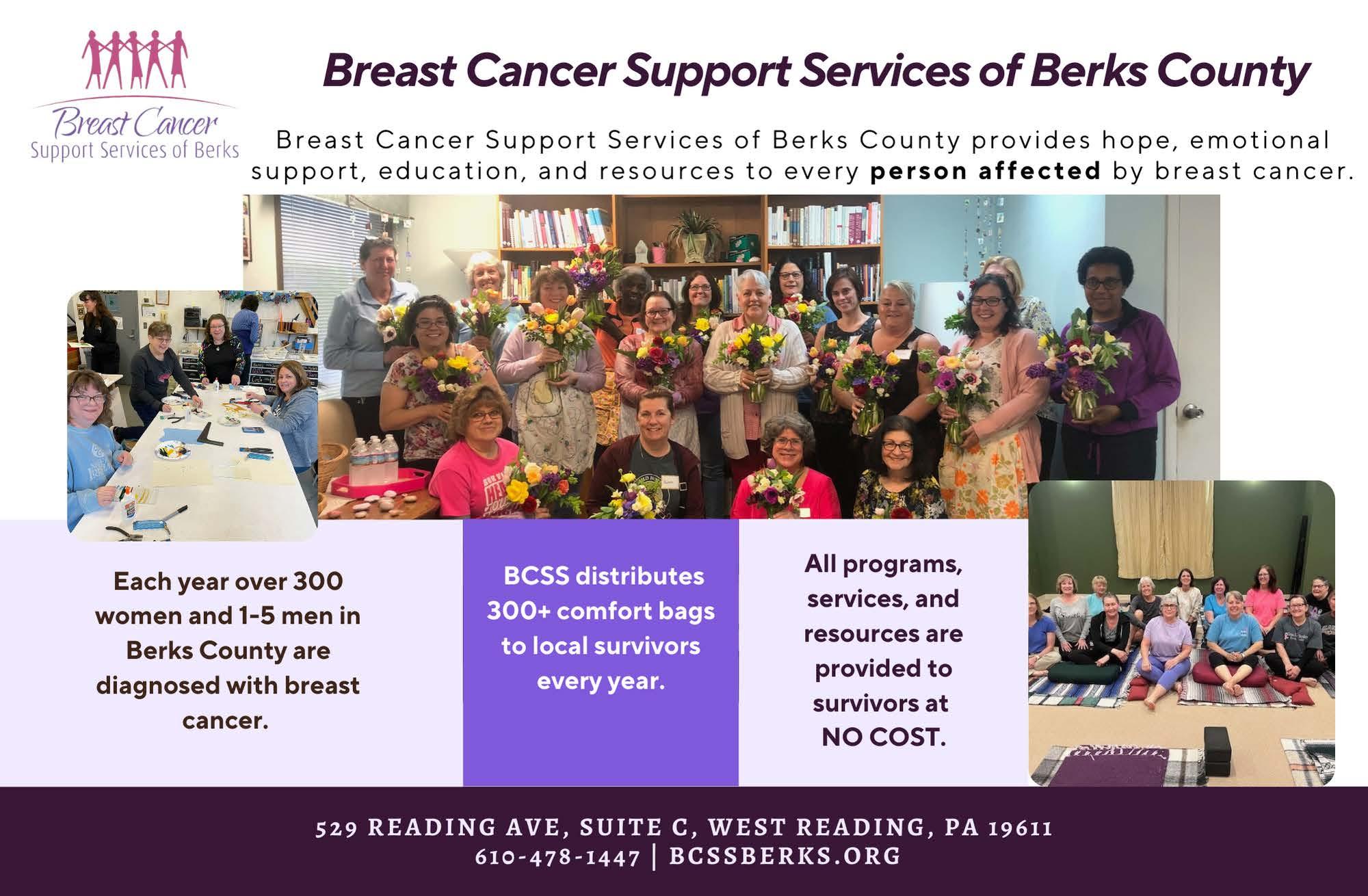

For five years, Amy Ames wore wigs in disguise until she decided to share her story in a big way. Within three months, she launched Grace & Grit Beyond Beauty to help women skip the scams, find quality hair, and get their confidence back. When she’s not in the boutique, you’ll probably find her traveling and chasing new adventures.

W2W: What is your mission?
My mission is to help women feel like themselves again: confident, beautiful, and empowered, especially when hair loss or self-doubt has shaken that foundation. Through Grace & Grit Beyond Beauty, I offer luxury hair solutions, real education, and a judgment-free space where women can learn, laugh, and leave feeling seen. It’s not just about hair, it’s about identity, self-worth, and walking out the door every day with your head held high.
W2W: What led you to your current career path?
My own journey led me here, one that included personal struggles with hair loss and watching other women around me go through it too, often feeling overwhelmed and under-supported. I saw how much it affected confidence, identity, and everyday life. I didn’t want women to feel like they had to “just deal with it” anymore. So, I combined my passion for beauty, education, and real connection to create Grace & Grit Beyond Beauty, a place where women could find high-quality solutions, honest guidance, and a whole lot of encouragement. It’s not just a business, it’s my mission.
W2W: Why is your position unique to women in our community?
At Grace & Grit Beyond Beauty, we’re not just selling products; we’re offering hope, education, and real support. So many women silently struggle with hair loss and how it affects their identity. We’ve created a safe, welcoming space where women can learn, ask questions, and feel empowered, whether they’re wearing hair temporarily or embracing it long-term.
But we’re not just about the gorgeous hair. Through our accessory boutique, we feature local, women-owned businesses to give others a chance to grow and shine too. It’s all about community, connection, and helping women feel confident in every part of their journey.
W2W: What do you consider women’s main asset?
A woman’s main asset is her resilience, that ability to keep going, to reinvent herself, and to rise even when things feel impossible. It shows up in how we care for others, how we adapt, and how we keep showing up, even when we feel like we’re falling apart. Pair that with confidence and community? Unstoppable.
W2W: What do you consider women’s main threat?
I think a woman’s biggest threat is selfdoubt; that quiet, sneaky voice that tells us we’re not enough, not ready, or not worthy. It holds us back more than any outside obstacle ever could. We’ve been conditioned to shrink, second-guess, and play small, but the truth is, when a woman starts believing in herself and owning her power, everything changes.
W2W: What is the most powerful way women can support each other?
The most valuable way women can support each other is by showing up, without judgment, without comparison, and without the need to “fix” everything. Sometimes that means holding space. Sometimes it means sharing resources, your story, or just reminding another woman that she’s not alone. We rise so much higher when we stop competing and start truly connecting.
W2W: What is the best advice that you’ve ever received?
The best advice I’ve ever received? Do it scared. Waiting until you feel ready is just fear in disguise. Growth happens when you show up anyway: imperfect, unsure, and a little shaky. That’s where the magic is. And honestly, confidence doesn’t come first, it’s built in the doing.
W2W: What words of wisdom do you offer other women?
Give yourself permission to take up space, even if it’s messy, emotional, or still in progress. Stop waiting for the “perfect time” to do the thing, wear the hair, launch the dream, or finally put yourself first. Confidence isn’t something you find; it’s something you build by showing up for yourself again and again. You are not too much. You are not too late. And you are absolutely worth the effort.
W2W: How do you want to be perceived/remembered?
I want to be remembered as someone who made women feel seen, supported, and strong. Someone who helped them rediscover their confidence when they thought it was gone for good. I hope people remember that I showed up with honesty, humor, and heart, and that I used my gifts to empower other women to own theirs.
W2W: What role do you think Women2Women plays in the community?
Women2Women is such an important force in our community because it creates space for women to truly lift one another up. For me, it was the strength and encouragement I found through groups like this that gave me the confidence to “do it scared.” There’s something incredibly powerful about women supporting women. It changes what feels possible. If you’re not in the room, you’re missing out on connections, inspiration, and the courage to take your next step forward. 2

By Katie Johnsen Events Coordinator, GRCA
To learn more about Grace & Grit Beyond Beauty, go to https://www. graceandgritbeyondbeauty.com/, call 484-663-3476 or visit 720 Penn Avenue, West Reading.


When I started working from home in the mid-2000s, my daughter was a toddler, and I happily embraced the opportunity to work independently and to have the flexibility to stay home with her. However, reality and aspiration soon collided as I quickly realized I couldn’t focus nor concentrate with her around. I remember berating myself: why couldn’t I look as put together and composed as the woman in the magazine photo, who appeared to be working productively, dressed impeccably with perfect hair and makeup, and holding her young child on her lap?
The woman in that photo made it look effortless, but it simply was not me. I have always needed quiet to work, and I simply couldn’t focus if my daughter was within earshot. My solution was to work during my daughter’s naps or in the evenings when she went to bed.
But the image of that woman “doing it all” nagged at me.
When COVID hit in 2020, everyone was forced to figure out how to manage their work responsibilities in a new environment: their home. I suddenly had “co-workers” sharing my work space, including my husband working from home and my now
high-school aged daughter attending classes remotely.
During that time of upheaval, everyone had to figure out what worked best for them as they struggled to blend their professional lives with their personal lives. And now, several years removed from that disruptive time, families are still figuring it out, whether working remotely, in-person, or in a hybrid situation.
Social media influencers perpetuate the idealized version of making work from home and parenting, and in particular mothering, look easy. Their posts typically feature a well-appointed and organized office space; a content child playing on the impeccably clean floor; “day in the life” photos of their daily routine that includes waking up early; meditating or exercising; getting the kids up, dressed and fed; and working, promoting the idea that a parent can have it all and do it well. This is an ideal for some but unattainable for many.

One influencer, Brianna “Bits of Bri,” shares her productivity routines in blog posts and videos. She offers tips on everything from cleaning, decorating, shopping, and working, with photos of her and her young children, always impeccably dressed and happy. One of the things to remember about influencers is that they are paid to be influencers. Their (and their sponsors) goal is to create an aspirational view of what the “ideal” productive workday looks like. It is highly unlikely that the public will see the underbelly of their reality: that the dog had an accident in the house, the kids have stains on their shirts, them taking a work call outside a doctor’s office waiting room, or any of the other normal day-today happenings that occur in real life. The images they share are curated, designed to be aspirational and to appear effortless.
On the flip side are influencers that have the same goal, to get people to watch their content, but with a different take. A different Brianna, Brianna James “TheMessyMama4,” shares videos of her home with toys, dirty dishes, and laundry scattered around. Her goal is to show what she calls the real side of stay-at-home parenting and encourages mothers to have self-compassion instead of guilt. These portrayals show that multi-tasking may not be feeding your baby while running a meeting but may be dashing into your chair for a ZOOM meeting with no time to spare as your child cries in the background.
Every family unit has its own rhythm, and there is no one-size-fitsall for getting it done. The best fit for you and your family’s mental, physical, and emotional well-being is the one that matches you, whether or not it’s Instagrammable. 2

By Karen Klein Fulcrum Information Resources


Being a mom is one of life’s most rewarding roles, but it can also be one of the most demanding. From sleepless nights with newborns to emotional talks with teens, motherhood stretches us in every direction. It is a constant juggling act of love, patience, identity, and exhaustion. Motherhood often reshapes our sense of self. While some women embrace the transformation, others may struggle – and we are here to tell you: That’s okay! There is no longer a need to live up to the pressure of “having it all together.” Instead, we want to celebrate YOU for showing up authentically. That means letting go of perfection, being honest about your struggles, and parenting with love, vulnerability, and your true self at the center. W2W asked a group of moms to reflect on their experiences with motherhood because no one should feel like they must do this alone. At the heart of Women2Women, we believe in embracing all parts of life, together.



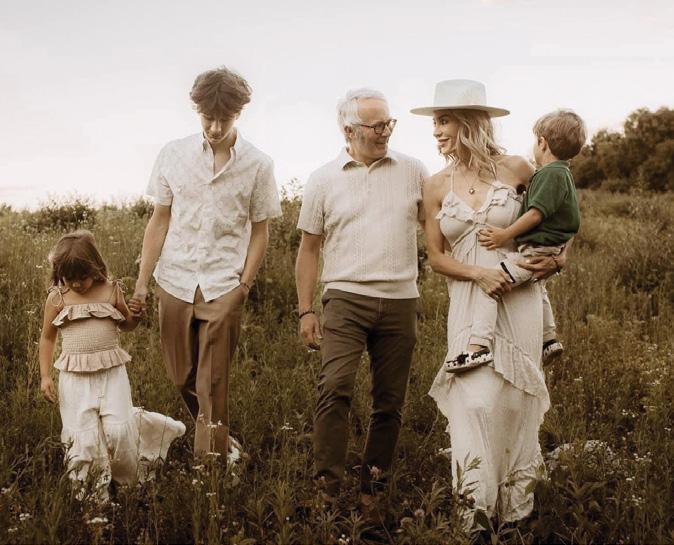
W2W: Tell us about YOU – your family life, career, or profession.
Alneasa Jordan: I am a proud mom of four children and a grandmother. I have been married to my bestie for over 25 years. My passion for the past 18 years has been in Human Resources Management.
Dr. Neha Majmudar: I am an internal medicine and obesity medicine physician at Tower Health. I have been practicing for 20 years in a faculty practice with internal medicine residents and medical students. My workday includes seeing patients and teaching. My family life includes my husband who is an Interventional Radiologist at Penn State St. Joe’s and my two daughters. My oldest, Amaya, will turn 22 in August. She just graduated from college and started her first job as an environmental engineer. My younger daughter, Seona, will start college at the end of August.
Mindy McIntosh: Hi! I’m Mindy McIntosh, Director of Development at Safe Berks. I’ve been working in the nonprofit world for over 32 years, and I truly love what I do. While there are always outside factors beyond our control, I love meeting new people, staying involved in the community, and know that I am making a difference. I am a divorced mom of three adult daughters: Rachel (28), Megan (27), and Jessi (26). As anyone knows who knows me, my girls are my world.
Danielle Stewart: I’m Danielle Stewart – wife to Brad and mom to three: Lincoln (19), Lola (6), and Crosby (5). I run an HR consulting firm I started from scratch in 2006. Over the last two decades, I’ve grown into an eight-person team serving clients across a wide range of industries. But the heart of my work has evolved. Today, I spend most of my time focused on professional development, executive coaching, and a program I created called Leading From Within. It’s built on the belief that strong leadership and personal development start with self-awareness. I help people get honest about their patterns, regulate their emotions, and lead from a place of alignment, not reaction. That same lens shapes how I parent and how I live.
W2W: How has motherhood changed your sense
AJ: Motherhood helped me find my purpose. Once I had my first, I knew I wanted to make the world a better place for myself and others. I knew I had this little person I had to protect and guide. I knew at that moment that making myself better would help mold my children to be great people.
DNM: Before I just thought of myself as a physician. After their birth, I realized I was a physician and a mother. I initially thought the mother part would be easy, but what I found out being a physician was easier, and the role of mother included so many roles: caretaker, event coordinator, baker, counselor, etc. The job description of a mother is expanding.
MM: It’s hard to even remember who I was before becoming a mom nearly 29 years ago. Working in the human services field, I’ve seen firsthand the heartbreaking effects of neglect and abuse in young children. I’m not sure how differently I would have parented without that perspective, but I am not embarrassed to say it made me a bit of a helicopter mom. Motherhood also pushed me outside of my comfort zone. I’m not someone who likes confrontation, but I clearly remember moments when I had to speak up because I felt one of my daughters wasn’t being treated fairly. The first time was terrifying but once I did it, I realized I could do it again. And it got easier. When you’re clear on your priorities and know you’re acting out of love, advocating for your child becomes second nature.
DS: It’s helped me mature emotionally. It forced me to slow down and made me question how I react under pressure, what I value, and what I’m passing on. In some ways, it’s been a second chance to experience childhood, this time with more patience and presence. It’s helped me stop sweating the small stuff and pay attention to the things that matter. Motherhood didn’t just change me; it helped reveal a version of me I hadn’t fully met yet.
Continued on page 16

4906 Penn Ave, Suite 202 Sinking Spring 610-484-3761 mycleardermatology.com

W2W: Who or what helps you get through the tough days?
AJ: My village for sure helps me get through those rollercoasters in life. My children are the motivating factor to get up every day. But surely my village of friends and family help me get through the storms in life.
DNM: My husband. He is my rock. When I have a tough day, he’s the first person I want to talk to. I also have a few close friends that I can pick up and call at any time of the day. The combination has been lifesaving.
MM: When I moved to Reading in 1993, I barely knew anyone. Once I had kids, I began connecting with other moms, especially the mothers of my daughters’ friends. That circle grew over the years, especially when the girls joined Girl Scouts. These amazing women became my tribe, and I’m so grateful that I’m still surrounded by this strong, supportive group of friends today. I love the beach and watching the sunrise over the ocean; there’s something truly calming about it that helps ground me. I find having a trip planned gives me something to look forward to and helps me get through the tough times.
DS: Perspective. I remind myself: this is the life I used to dream about. That awareness alone can shift my entire headspace immediately. Hard moments still happen. But I’ve trained myself to pause and zoom out. When I look at the full picture, my family, my work, the people I love, it’s a lot easier to deal with the temporary frustration of a bad day.
W2W: What advice would you give to a new mom?
AJ: The best advice that I give new moms is that there is no textbook in parenting. Do your best, whatever that looks like. Don't be hard on yourself. Take lots of photos because they grow up so fast.
DNM: Don’t sweat the small stuff. Most things don’t matter. Teach kids to be good humans. And to try their best at anything they do. The rest will come. And trust your instinct over any book or podcast.
MM: Lean on your tribe, they're there for you. Don’t be embarrassed or ashamed to ask for help. Chances are that your friends have gone through something similar and can offer support or a listening ear. Offer to babysit for your friends so they can return the favor. Going out on a date with your partner is already expensive and adding the cost of a sitter can make it feel impossible. Most importantly, trust your instincts. You know your child better than anyone. If something feels off, don’t hesitate to seek a second or even third opinion. No one will advocate for your child the way you will.
DS: Work on yourself first. Not in a self-help cliché kind of way, in a real, practical way. Learn how to sit with your own frustration, your own discomfort, your own fears. Because the truth is, your reactions shape your child’s emotional world more than anything you say. Your kids don’t need you to be perfect. They need you to be emotionally available and consistent. That means knowing your own patterns, slowing down enough to catch your triggers, and building the capacity to respond instead of reacting. If you want your kids to become emotionally healthy adults, model that. Create an environment where they’re allowed to feel what they feel. That starts with learning how to handle what you feel.
W2W: What is your favorite part about your child’s current age?
AJ: My first-born, Julius, is 24. He’s recently married and a new dad, and the best part of his current stage in life is watching him grow into a loving partner to his wife and an incredible father. My second son, Josiah, is 20. I love seeing how he’s matured in both his faith and his career. He’s a college student living five hours away, completely independent, and simply a wonderful human being. The youngest of the Jordan boys, Jaison, is 14 and about to start high school. It’s exciting to watch him discover his passions and grow into himself. My only daughter, Carmen, is 13 and the firecracker of our home. She’s taught me to be more free-spirited and to embrace fun in the everyday.
DNM: I love talking to them. I love that they can give ME advice. They are always teaching me something new whether it be about current culture, fashion, politics, etc. I love that they have their own opinion. We have wonderful discussions together. And I learn from them.
MM: I love seeing my girls thrive in their adult lives. My oldest lives in Lancaster, my middle daughter is in Gaithersburg, MD, and my youngest is still local. Even though they’re “adulting” every day, I know they still need me and (usually) value my input. I’m the person they call when they need something, and I’m so grateful to be that person for them.
DS: The way they think. The questions they ask. The creativity that shows up in the little things – drawings, made-up games, bedtime conversations. They’re not filtering yet. They’re just them. And I love watching that unfold. I try to see each day as its own stage. Not better or worse than what came before, just new. I save their drawings, I write down the weird stuff they say, and I take mental notes all the time. I don’t want to miss any of it.
W2W: How do you stay connected to your own identity outside of being a mom?
AJ: I stay connected to my own identity by making time for myself. I’ve learned that to be my best for my children, I first must take care of me, so my “me time” is non-negotiable. I pamper myself when I need it, volunteer regularly, and stay engaged in women’s groups such as Women to Women. These moments of self-care and community keep me grounded and energized.
DNM: I love working out. I love it because just completing a workout gives me satisfaction of a completed activity. Also, through that I’ve met a group of friends that don’t know me as a doctor and don’t know me as a mom but know me as the person at the gym.
MM: For many years, my life revolved around my daughters and their school and extracurricular activities. But after my divorce, I realized it was finally time to focus on myself. I’ve always loved to travel, and now I find it incredibly freeing. I take several trips a year (mostly to the beach). I get to go where/when I want, and I’m no longer paying for five people to travel!
DS: I have a consistent practice of self-reflection and presence. I spend time thinking about what I want, what I’m feeling, and how I’m showing up. I also stay connected to my work, not just the business side, but the creative, leadership-development side. I write. I teach. I coach. And I surround myself with people who are also trying to grow. Being a mom is a huge part of my life, but it’s not all of it. I see parenting as a relationship, not an identity. I’m not here to control or live through my kids, I’m here to support them as they become who they are. That’s only possible if I stay clear on who I am, too.



Continued on page 18



W2W: What’s the best piece of advice you’ve received from another
AJ: The best advice I received from another mom is don't be hard on yourself. You are doing your best. God will take care of the rest.
DNM: “The days are long, and years are short.” When everything seemed wrong, when I had a sick kid and a full day of office patients and I needed to figure out how to make it all right, that piece of advice helped me a lot. Now that I face being an empty nester, I have realized the years are short!
MM: The best piece of advice I’ve received from another mom is this: Nobody is perfect, so don’t try to be. Putting on a “supermom” cape only adds stress and usually backfires. Embracing that helped me be kinder to myself and focus on what truly matters.
DS: Your kids aren’t listening to what you say. They’re watching how you live. That one hit me early, and it’s stuck. Everything you model: how you handle stress, how you talk about yourself, how you respond when something goes wrong, is getting absorbed. Not in a performancebased way, but in a “this is how life works” kind of way. That realization shaped how I show up, not just as a mom, but as a leader. It’s the same reason I built Leading From Within. Whether you’re leading a team or raising a child, your environment matters. And you are the environment. Your tone, your nervous system, your habits, they all create the emotional space that someone else develops in. So, if you want your kid to be emotionally intelligent, confident, kind, or grounded, you start by building that in yourself.
W2W: What is your favorite way to connect with your child?
AJ: The best way I connect with my children is one-on-one. Each of them is unique, with their own personality and interests, so I try to meet them where they are, whether it’s playing football, seeing a Broadway show, or simply enjoying an activity they love. They treasure that individual attention, and I treasure the time to understand them more deeply. We also share traditions that bring us together as a family, like our annual spring photos, game nights, and cutting down the Christmas tree. These moments, both individual and shared, are the heart of our family connection.
DNM: When the kids were in elementary school, we started a mommy & me day. I love spending one-on-one time with them. Sometimes it only means going out to lunch. Sometimes it’s an activity, but having one-on-one time was precious. When my older daughter was away at college in NYC, I have really enjoyed our family group texts. We share what is going on in our lives and lots of fun pictures (our cat is one of our favorites to share). It’s a really nice way to communicate.
MM: I’ve started a tradition of spending one-on-one time with each of my girls to celebrate their birthdays. Whether it’s going to a concert, like seeing Andy Grammer with Jessi on her 26th birthday, or a movie, special dinner, or even just a day away together, I love having that devoted time with each of them. It’s a special way for us to connect and make memories.
DS: Presence. No phone, no distractions, just real connection. I love giving them space to talk about what’s on their mind. I love hearing how they think. We have Friday night sleepovers in my bed. We hike. We hang at our cabin. We eat ice cream in the middle of the day. It’s simple stuff, but it’s real. I also try to connect during the hard moments: when they’re tired, overwhelmed, or upset. That’s when they need it most. And I remind myself: I get to be the one they come to. That’s not something I take lightly. 2

By AnnMarie Haus, MBA VP, Business Development & Community Outreach, Customer Bank
W2W
R&D Committee Member
In today’s rapidly evolving business landscape, one of our greatest untapped resources isn’t found in the latest technology. It’s sitting right across the conference table. The power of intergenerational networking has never been more crucial, yet recent studies reveal a concerning trend: younger professionals are struggling to build meaningful connections across age groups, missing out on invaluable opportunities for growth and collaboration.
According to a recent Robert Half survey, Generation Z workers face unique challenges in workplace networking, with 53% citing difficulty finding new connections as their biggest networking barrier. Meanwhile, seasoned professionals possess decades of wisdom, established networks, and hard-earned insights that could transform careers and businesses alike.
The solution? Creating intentional bridges between generations.
The generational divide in networking isn’t just about age. It’s about communication styles, priorities, and comfort zones. While younger professionals have grown up in an increasingly digital world, many still crave the in-person collaboration and mentorship that more experienced colleagues can provide. In fact, 59% of Gen Z workers place increased value on in-office time and face-to-face collaboration, recognizing that screens can’t replace the nuanced learning that happens through personal interaction.
For women in business throughout Greater Reading and Berks County, intergenerational networking offers particularly powerful advantages. Older generations of women have blazed trails, broken glass ceilings, and learned to navigate challenges that younger women are
Continued on page 20

just beginning to encounter. Their stories, strategies, and support systems can provide invaluable guidance for emerging leaders.
Intergenerational networking isn’t a one-way street. While younger professionals gain access to wisdom, established networks, and institutional knowledge, experienced professionals benefit from fresh perspectives, technological insights, and innovative approaches to problem-solving. This exchange creates a dynamic where both parties grow, learn, and adapt.
Consider the technology executive who partners with a recent graduate to understand social media marketing, while sharing decades of leadership experience in return. Or the established entrepreneur who gains insights into sustainability practices from a younger colleague, while offering guidance on scaling a business. These relationships create ripple effects that strengthen entire organizations and communities.
Creating meaningful intergenerational relationships requires intentionality from both sides. For experienced professionals, this might mean actively seeking out mentoring opportunities, participating in reversementoring programs, or simply taking time to engage younger colleagues in substantive conversations about their goals and perspectives.
Younger professionals can bridge the gap by approaching networking with curiosity rather than intimidation. Rather than focusing solely on peers, they can seek out industry veterans at networking events, ask thoughtful questions about career journeys, and express genuine interest in learning from others’ experiences.
Organizations can facilitate these connections through structured mentorship programs, cross-generational project teams, and networking events specifically designed to bring different age groups together. Simple initiatives like “lunch and learn” sessions where different generations share their expertise can create lasting professional relationships. At Herbein + Company, these sessions are regularly among the firm’s most attended internal events.
The benefits of intergenerational networking extend far beyond individual career advancement. When different generations work together effectively, they create more innovative solutions, build stronger teams, and develop more resilient businesses. They break down stereotypes, reduce workplace tension, and create environments where everyone can thrive.
For our business community in Greater Reading and Berks County, investing in intergenerational networking means building a stronger economic foundation. When knowledge transfers seamlessly between generations, when experienced professionals remain engaged and valued, and when younger workers feel supported and connected, everyone wins.
As we navigate an increasingly complex business environment, the wisdom of experience combined with the energy and innovation of youth is an unbeatable combination. The question is not whether we can afford to invest in intergenerational networking, it’s whether we can afford not to.
The conversations between “old and young” aren’t just nice to have. They’re essential for building the thriving, inclusive business community we all want to be part of. It’s time we started talking again. 2

By Jennifer Goldsmith Cerra Director of Communications, Herbein + Company, Inc.





There’s a hum that rises when women come together with purpose. It’s not loud, but it’s steady. It grows as conversations spark, connections are made, and trust deepens. I like to call that sound the beehive: a living, buzzing ecosystem where intention meets authenticity meets relationships. It is what gives me energy. It fills my cup. And it is something that I want to share with every person I meet.

I’ve always believed that real leadership and real networking isn’t about how many business cards you can collect. It’s about whether you can look someone in the eye, listen deeply, and make them feel like they’re the only person in the room. When you genuinely hear someone, you’re building a foundation that goes far beyond small talk. I like to think of it as “connection, not collection.” That shift, from quantity to quality, changes everything. It’s what allows us to support each other not just in professional pursuits but in personal journeys, too. I have many times shared that being authentic is what makes it all real. I’m silly, I’m serious, I share the truth, and I laugh at myself. Showing people that your human-side is worth it.
The women I’ve met through intentional networking aren’t just colleagues; they’re mentors, cheerleaders, and sometimes the friends who remind me to take a breath when life feels like too much.
Women2Women often speaks of mentorship and sponsorship as vital tools for your personal and professional growth. I never once thought of myself as a mentor. And then I started to feel it from other women of all ages. I felt it when they smiled at me, when they talked to me, and when they asked me honest questions. They cared about my answer.
I’ve been lucky enough to both mentor and be mentored, and what I’ve learned is that effective mentorship isn’t about having all the answers. It’s about asking bigger, more thoughtful questions. It’s about listening to what isn’t being said and being brave enough to share both your wins but
also your missteps. Vulnerability is often where the most powerful lessons live, and it took me a bit of time to learn that. I always wanted to look unbreakable and strong, but I’ve learned that only makes you look like a robot (thanks Elle), and nobody wants to talk to a robot.
Mentorship across generations is especially rich. Younger women bring energy, fresh thinking, and new ways of solving problems. More experienced leaders bring perspective, resilience, and stories of lessons learned the hard way. When you bring them all together, possibilities are endless.
One-on-one mentorship is powerful, but circles are where the hive truly comes alive. I’ve seen it time and again, where women across industries and stages of life come together to share stories, exchange knowledge, and lift each other up.
These circles are built with intention: diverse voices, shared goals, and a rhythm of connection. They’re not about who has the fanciest title or the most LinkedIn connections. They’re about who’s willing to show up authentically, ask for help, and offer it in return.
The most moving moments happen when someone who’s never told her story before finds the courage to share it and suddenly, others in the circle see themselves in her words. Those sparks, that resonance, is what makes a circle so powerful.
Continued on page 22
I’d be lying if I said building these circles of influence is easy. Between my day job and running Just Breathe Weddings & Events; raising a messy toddler family; making sure I make time for my family; and trying my hardest to be a good wife and partner, my calendar is more than full. I fail a lot. Something is always slipping. It’s hard. I’m tired. There is no “balance.” You do your best at the task at hand.
But here’s the thing: when you build your hive intentionally, it doesn’t feel like another item on your to-do list, it feels like oxygen. The women in my hive hold me accountable to rest, to celebrate, and to stay aligned with my purpose, not just my deadlines. I used to hold myself at such a high standard to be “on” for everyone and it just isn’t realistic. That hive I’ve built, they get that, and we buzz around each other giving what we have to give. Sometimes that’s not much but it’s what we got.
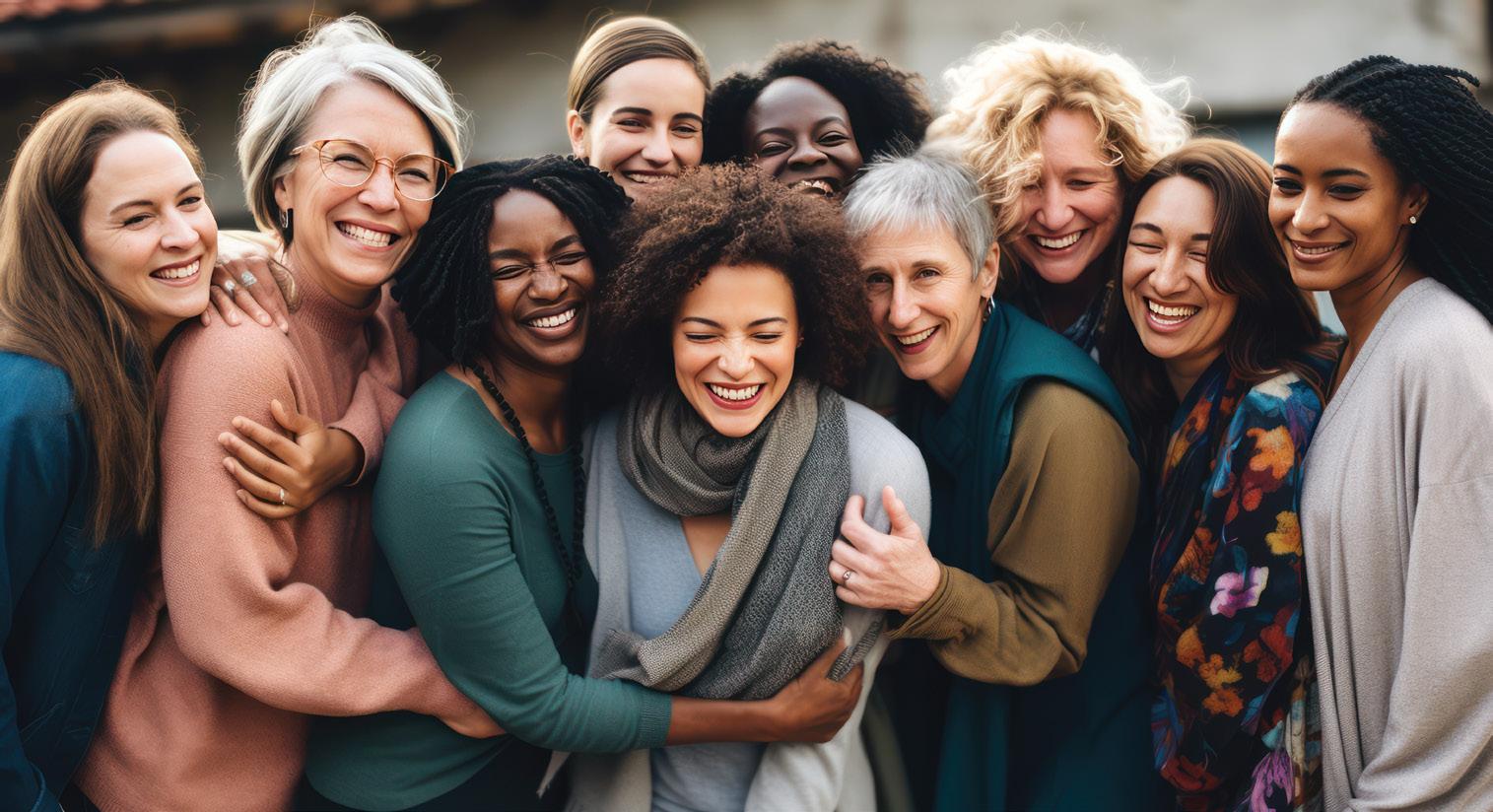
our communities, businesses, and families. It sparks new leaders, fuels innovation, and strengthens bonds across divides.
A hive doesn’t hum because the bees are simply near each other—it hums because they’re working together, each one contributing to something larger. When we create our beehives with purpose, we do the same. 2

You don’t need to wait for the “perfect” group or the “right” time to begin. You already have what it takes to start building your hive today. Here’s how:
• Name your intention. Decide whether you’re looking for mentorship, peer support, a mix, or even a book club. Clarity invites the right people in.
• Start small. A hive begins with just a few bees. Reach out to one or two women and suggest a conversation with purpose.
• Bridge generations. Be intentional about including voices younger and older than your own. It’s the diversity of the group that continues the conversation.
• Create rhythm. Whether it’s monthly coffee, quarterly workshops, or virtual check-ins, consistency builds trust. Don’t force it. Even a quick text to the group can suffice if that’s all you have to give.
• Celebrate the small wins. Every introduction, every “aha moment,” every misstep, every story told is growth to the hive. Acknowledge them. Listen. And when the hive is ready, work together to come up with a solution.
Ask yourself: Who belongs in your hive? Whose hive can you strengthen? And what hive are you already a part of that can continue to grow?
Here’s what I know: when women connect intentionally, mentor generously, and build circles of influence with care, the buzz doesn’t just stay in the hive. It carries out into
By Rachael Romig Community Relations Manager, UGI Utilities, Inc.
stay in their
and keep the
they cherish
always conduct

confidential
assurance visitations to go hand-in-hand with a customized care plan specifically for your loved one. We are locally owned and operated, giving us a stake in your community. • A Few Hours a Week or 24/7
Meal Preparation
Personal Hygiene
Shopping/Groceries
And More...

“Prioritizing your mental health is not selfish—it’s an investment in yourself and in the well-being of your entire family.”
For many women, knowing when to reach out for mental health support isn’t as simple as it sounds. We often carry an invisible load, balancing careers, caring for family, nurturing relationships, contributing to our communities, and somewhere in that constant giving, our own well-being can quietly slip to the bottom of the list.
In my work as a Licensed Marriage and Family Therapist, I’ve noticed a pattern: many women don’t walk through my door at the first signs of struggle. They often arrive in the middle of a storm: grieving a loss, facing a breaking point in a relationship, or feeling so emotionally drained that even simple daily tasks feel overwhelming.
As the founder of Agape Counseling Services, LLC in Wyomissing, PA, and a doctoral student in Professional Counseling, I still see one consistent truth: too many women wait until they are in emotional or relational crisis before seeking help.
There’s no single reason women delay getting support. Many of us were raised to be the caretakers, taught to put everyone else’s needs before our own. Between managing households, raising children, working, and caring for aging parents, self-care can feel like a luxury instead of a necessity.
Cultural expectations can also play a role. In some communities, emotional struggles are seen as personal weaknesses, something to hide or quietly push through. This can lead to fears of judgment, gossip, or being viewed as incapable.
Then there’s the stigma, both from others and from ourselves. Thoughts like “I should be able to handle this on my own” or “It’s not bad enough for therapy” often keep women from reaching out until they’re on the edge of burnout.
In the Hispanic community, mental health stigma can be particularly strong. Emotional challenges might be labeled as “nervios” or dismissed as temporary stress. The advice may be to pray more, stay strong, or rely solely on family support. While faith and family are powerful resources, they can unintentionally delay professional intervention.
It’s also important to remember that the Hispanic population is richly diverse, rooted in countries across Latin America and the Caribbean. Views on therapy vary based on factors like country of origin, immigration experiences, language, and generational perspective. For example, first-generation immigrants may face language barriers or fear discrimination, while second-generation women may feel torn between cultural traditions and American openness to counseling.
A strong cultural value like familismo, deep loyalty to family, can be both a strength and a challenge. It fosters unity, but it can also lead to women sacrificing their own needs to maintain harmony, which often results in burnout or hidden depression.
The first step toward getting help is noticing the signs that something’s off. They might show up emotionally, physically, mentally, or in your relationships:
• Emotional: Persistent sadness, irritability, anxiety, hopelessness, or emotional numbness.
• Cognitive: Trouble focusing, difficulty making decisions, or frequent forgetfulness.
Continued on page 24

• Physical: Changes in appetite or sleep, headaches, stomach discomfort, or unexplained aches.
• Behavioral: Withdrawing from loved ones, neglecting responsibilities, or leaning heavily on substances to cope.
• Relational: Increased conflict, emotional distance, or feeling disconnected from the people who matter most.
If these challenges last more than a couple of weeks or disrupt daily life, it’s a clear sign to consider professional support.
Many women delay therapy because, from the outside, they’re still “managing.” They’re showing up for work, cooking dinner, caring for kids, checking items off the list. But functioning is not the same as living well.
I’ve sat with women who seemed to have it all together yet felt empty, exhausted, or deeply unhappy inside. Therapy isn’t just about putting out fires; it’s about building a life that feels balanced, meaningful, and fulfilling.
Strong, supportive relationships are essential for a woman’s emotional health. They can provide a sense of safety, belonging, and encouragement. But unhealthy or one-sided relationships, whether romantic, family, or friendships, can erode self-worth and add significant stress.
In therapy, women can explore how to set healthy boundaries, communicate clearly, and foster connections that are rooted in respect and mutual care. When women are surrounded by relationships that lift them up, they have the emotional strength to recover from challenges and thrive in every area of life.
Mental health is never just an individual matter; it ripples through the entire family system. When a woman is stressed, depressed, or overwhelmed, her loved ones feel the effects.
But the opposite is also true: when women invest in their own wellbeing, the benefits spread. Relationships improve, communication deepens, and children learn by example that taking care of your mind is just as important as taking care of your body.
“Functioning is not the same as thriving. You deserve more than just getting through the day—you deserve to feel fulfilled, balanced, and emotionally healthy.”
To know if it’s time to reach out, ask yourself:
• Have I felt emotionally “off” for more than two weeks?
• Are my relationships suffering because of my emotional state?
• Am I struggling to keep up with responsibilities I once managed easily?
• Have I tried self-care but still feel stuck?
• Do I feel disconnected from who I used to be?
If you answer “yes” to any of these, it may be time to take that first, brave step.
The “right” time to seek help isn’t when you’ve reached your breaking point. It’s the moment you notice the weight getting heavier or your joy slipping away. You deserve balance. You deserve peace. And you deserve to thrive.
We’ve mastered the art of showing up for others. Now it’s time to show up for us. Prioritizing mental health isn’t selfish, it’s a declaration that you matter. 2

By Diossanta Reyes, LMFT Agape Counseling Services, LLC, Wyomissing, PA
Diossanta Reyes, LMFT, is the founder of Agape Counseling Services, LLC in Wyomissing, PA. Since 2012, she has served in both outpatient and inpatient settings. A bilingual therapist, she specializes in working with individuals, couples, and families from diverse backgrounds, with a passion for supporting the Hispanic community in breaking the stigma around mental health.
Diossanta is currently pursuing her Doctorate in Professional Counseling and is dedicated to helping women build emotional resilience, healthy relationships, and fulfilling lives.

October isn’t just about pink ribbons: it’s about taking control of your health. Just as the NFL has expanded cancer awareness through their Crucial Catch program, Cancer Genetic Risk screening can look deeper into your personal health care journey.
Did you know that learning about your Cancer Genetic Risk can be a health promoting and lifesaving approach for you and your family?
A Cancer Genetic Risk Evaluation Program can provide you with a personalized plan of care to help you understand, reduce and/or manage your cancer risk. A comprehensive cancer risk assessment is available to any individual concerned about advanced cancer screening options based upon personal and family risk factors.
What to expect at a Cancer Genetic Risk Evaluation
A Genetics professional will review your personal cancer risk factors as well as your family history of cancer(s). Genetic counseling is a key aspect of care which includes discussion about the option to pursue genetic testing and, if it is appropriate based upon eligibility criteria as recommended by National Cancer Guidelines.
Self-Awareness and education about your own Personal Cancer Risk Factors
Learning about your personal cancer risk factors can ensure that you are receiving a timely preventative screening approach tailored to you. Some Personal Risk considerations to mention may include:
• Age. While we can’t control aging itself, cancer risk increases with age. For example, The American Cancer Society reports that most breast cancers are detected in women 55 or older.
• Ancestry. As an example, individuals of Ashkenazi Jewish ancestry have an increased chance of inheriting gene mutations in the breast cancer (BRCA1/BRCA2) and other cancer genes.
• Dense Breast Tissue, Multiple Breast Biopsy Procedures, certain breast conditions, and Hormonal Use are contributing factors.
• Environmental Exposures and Lifestyle Behaviors
Learn if you are at risk for hereditary cancers that can run in families
Your family history of cancer(s) helps to determine if you and your family are at hereditary risk or have a predisposition to develop cancer. Think about asking other family members if there are any
known cancers among relatives. Young onset family cancers can mean that cancer screening for these identified cancers will start earlier than the average current screening guidelines. You could be the health advocate for yourself, your children, and your entire family.
A detailed family tree (pedigree) is a diagram of your cancer history and serves as a tool in relating certain cancers with specified cancer genes. This information is a valuable keepsake outlining your personal/family cancers that could be linked to certain cancer genes.
Being adopted or having limited information regarding your family cancer history should not prevent you from pursuing your own cancer risk assessment.
Some of the signs of a hereditary predisposition to cancer may include having a personal and /or family history of one or more close blood relatives with ANY of the following:
• Breast, Colon, or Endometrial (uterine) before age 50
• Ovarian or Pancreatic cancers
• Male breast cancer or Prostate cancer
• Relative with known hereditary cancer gene mutation
• ≥5-10 cumulative pre-cancerous colon polyps
• Pattern of cancers on one side of the family suggestive of a hereditary syndrome such as Lynch which consists of: Colon, Uterine, Ovarian, Prostate, and other associated cancers
Genetic testing consists of DNA blood, saliva, or mouth swab to determine if you were born with cancer gene mutations inherited from either your Maternal or Paternal side of the family. Inheriting a cancer gene mutation can put you and your family at a higher risk of developing cancer. Genetic testing is a personal choice, but genetic counseling can assist with your decision. Genetic testing results can guide your approach to cancer prevention, appropriate screening measures, risk reduction, and possibly inform targeted treatment modalities for individuals diagnosed with cancer.
Continued on page 27





Most insurances will follow guideline-based genetic testing criteria and provide coverage for your genetic counseling and testing. Your genetic professional utilizes clinically certified labs with specific expertise in cancer gene testing. Many of these labs provide financial assistance opportunities.
How will Cancer Genetic Evaluation play a role in your Healthcare Journey?
You will receive a personalized and comprehensive cancer risk recommendation plan of care which may include:
• Interpretation of Genetic Test results with Guideline-based cancer risk management strategies designed for you and your family.
• Calculation of Breast Cancer (5-, 10-year, and Lifetime) Risk Estimation utilizing software-based risk models supporting indications for increased surveillance such as breast MRI and/or riskreducing medications such as Tamoxifen or Raloxifene.
• Ongoing screening and risk-reduction approaches in collaboration with your Healthcare Team.
• Increased Cancer Screening Guidance such as Low Dose CT Scan screening based upon smoking history and education about Healthy Lifestyle Behaviors.
Most Cancer Risk Evaluation Programs offer longitudinal care visits to ensure the coordination of and adherence to your Cancer Risk Management Plan of Care.
A comprehensive cancer risk evaluation adds that personal touch to a lifelong action plan and healthy peace of mind!
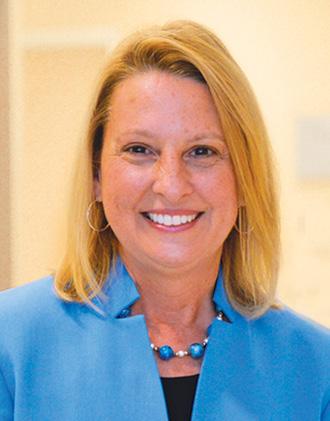

By Donna A. Lamp, RN, BSN, CCM, CGN, CGRA (left) and Yuriko Beaman, MS, LCGC Penn State Health-St. Joseph
Personalized Risk Assessment
A tailored evaluation of your unique health profile
Genetic Counseling
Expert guidance to understand your inherited risk factors
Genetic Testing Options
Cutting-edge screening to identify potential genetic mutations
Comprehensive Care Plan
Actionable strategies to manage and mitigate your cancer risk
Trusted Resources
- American Cancer Society: www.cancer.org
- Facing Our Risk: facingourrisk.org
- National Comprehensive Cancer Network: www.nccn.org


Scan here to visit our website and check out our mental health services, including: Individual Therapy Group Therapy Couples Counseling School-Based Services
Don’t forget to check out our wellness services, including: Nutrition Coaching Accountability Coaching Life Coaching


Getting a shot is no one’s idea of fun.

However, vaccines are one of the safest and most effective ways to protect your health. And the truth is they’re important at every stage of life to prevent the spread of serious diseases.
“Vaccines are still valuable and necessary,” said Dr. Olubunmi Ojikutu, chair of pediatrics at Reading Hospital. “The best treatment we have is prevention through vaccination, and when we partner together, we can keep devastating diseases out of our lives.”
Essentially, vaccines help your immune system “practice” fighting off viruses and bacteria. That way, if you’re exposed later on, your body already knows what to do, and you’re less likely to get seriously ill.
Plus, when more people in a community are vaccinated, it creates “herd immunity.” This allows those who are unable to get vaccinated like newborns, the elderly, people undergoing cancer treatment, or anyone with a weakened immune system to still get some protection, because the disease has fewer chances to spread.
Vaccines are not one-size-fits-all. What you need most often depends on your age, lifestyle, travel plans, health conditions, and whether you’re pregnant, among other factors, according to the Centers for Disease Control and Prevention (CDC). That’s why it’s so important to talk to a trusted provider or pharmacist about what’s right for you.
Some of the most common vaccines recommended for adults include:
• COVID-19 (including boosters)
• Flu (yearly)
• Tdap or Td (for tetanus, diphtheria, and pertussis)
• Hepatitis A & B
• MMR (measles, mumps, rubella)
• Polio
• HPV (especially for younger adults)
• RSV, Shingles and Pneumonia (especially for older adults or high-risk individuals)
“Vaccines are a powerful preventive measure,” said Dr. Debra Powell, Chair, Department of Medicine, and Chief, Division of Infectious Diseases, at Reading Hospital. “They keep us healthy, protect those around us, and help our communities to dramatically reduce illnesses and avoid potential outbreaks. They prevent millions of deaths each year.”
Continued on page 30
Between social media debates and the number of vaccines available, it’s easy to feel confused or overwhelmed about what vaccines are necessary or when to get them. That’s where your provider can step in.
“You might have questions when establishing a personalized vaccine schedule for you and your family, and that’s OK. We’re here to help,” Powell said. “We always encourage you to talk with a health care provider who can answer your questions, listen to your concerns, and offer honest, reliable information.”
The Centers for Disease Control and Prevention (CDC) also provides up-to-date vaccine schedules by age on their website to help you manage your care, including, but not limited to:
• Children: Depending on age, vaccinated against Hepatitis B, DTaP, Hib, Polio, Rotavirus, and other diseases, such as meningitis, according to a recommended schedule.
• Adults (ages 19–64): COVID-19 vaccine, annual flu shots, tetanus boosters, hepatitis vaccines, and HPV (up to age 26, or 45 for some), and potentially other vaccines based on risk factors. The pneumococcal vaccine is also recommended for those age 50 and older.
• Older adults (ages 65+): COVID-19 boosters, pneumonia, flu, shingles and RSV are especially important. HepB vaccination might also be recommended for those ages 60 and older who have risk factors for the disease.
• Pregnant people: COVID-19 and flu vaccines are recommended to protect both mom and baby.
• Frequent travelers: May need vaccines, such as yellow fever and typhoid, depending on the destination. Consultation and vaccines can be provided at the Tower Health Travel Medicine Clinic.
• Weakened immune system: Speak to your health care provider or pharmacist for recommendations.
• Note, other vaccines might be recommended, too.
Stick with the facts
Getting vaccinated is a small act that makes a big impact. It protects your health, gives peace of mind, and helps build stronger, healthier communities. Still, knowing what’s safest, necessary or recommended is best discussed directly with your provider.
“Vaccination can prevent serious illness, stop the spread of diseases, and give us all a much better shot at staying well,” Powell said. “You might not think you need a vaccine, but it could make all the difference to keep yourself and your family healthy.” 2

By Tower Health-Reading Hospital
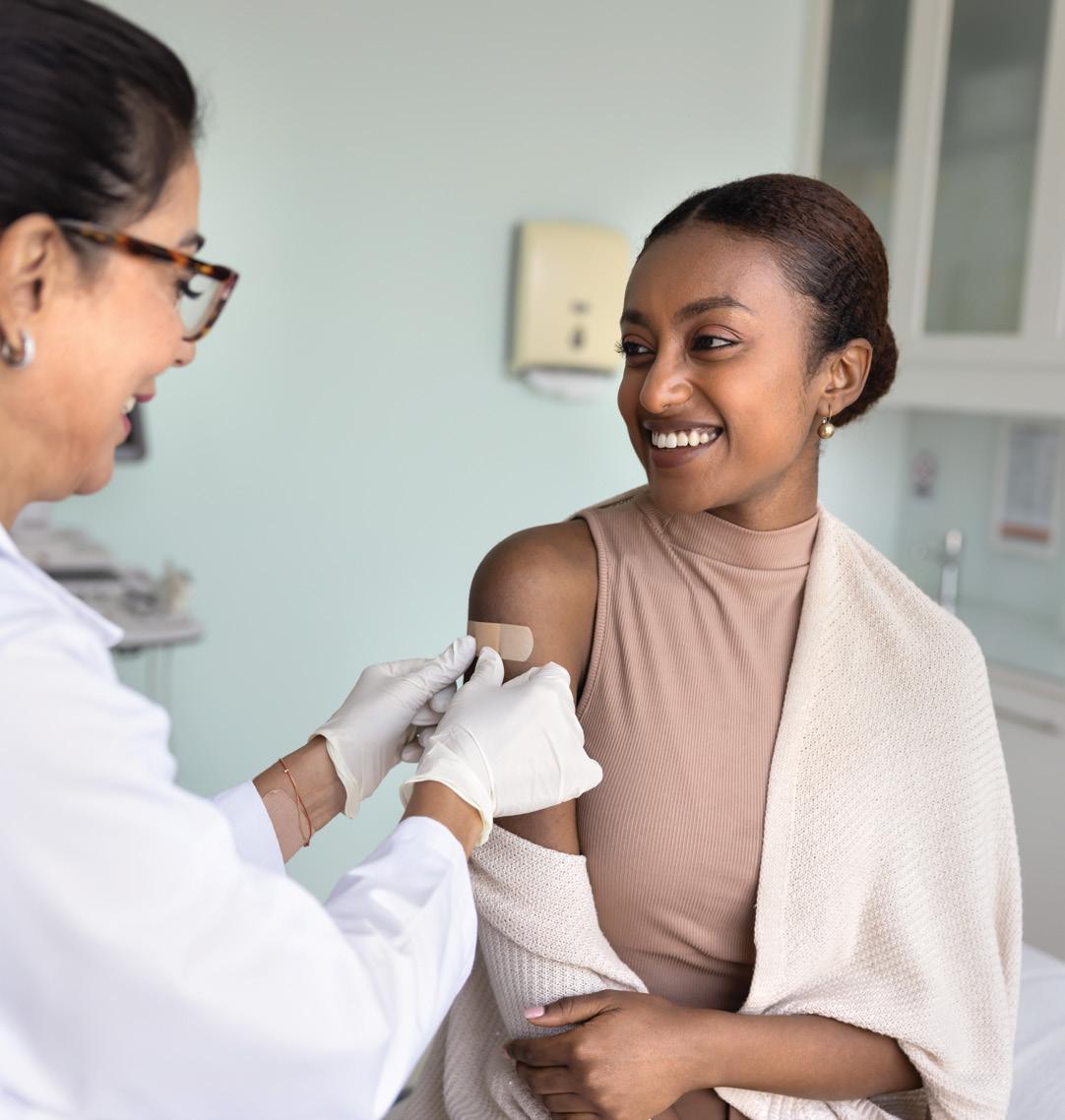
1. Am I up to date on my vaccines?
You could be due for a booster without even realizing it. For example, you need to update your tetanus shot every 10 years.
2. Are there any vaccines I need based on my age, lifestyle, or health?
Certain vaccines, like shingles or RSV, are recommended starting at age 50 or 60. Your provider can help you personalize your vaccination schedule.
3. Are vaccines safe if I’m pregnant or trying to conceive?
Some vaccines are recommended during pregnancy to protect mom and baby. Discuss options with your OB-GYN or midwife.
4. Do I need any vaccines before traveling abroad?
Yes, oftentimes, extra protection against diseases might be required depending on your destination. Make sure to get the recommended vaccinations at least four to six weeks before your trip. The Tower Health Travel Medicine Office is available to review your travel destinations, provide recommendations, and administer vaccines.
Women2Women (W2W) is Greater Reading Chamber Alliance’s catalyst for developing women leaders and connecting women from diverse backgrounds to learn, share ideas, and mentor each other through offering a forum for women to create connections, gain knowledge, and build strategic alliances to foster their personal potential and career advancement. Joining the network is open to all who support women.
De Mujer a Mujer, una iniciativa de W2W, continúa conectando a mujeres de diversos orígenes al ofrecer programación especializada en la noche y destacar a oradores de diversos orígenes.
EVENING OF EMPOWERMENT WITH KEYNOTE KATIE SANDOE
Do No Harm, Take No Crap, Own Your Power
THURSDAY, OCTOBER 9, 5:30-8 P.M.
Redner’s Event Center
Join us for a celebration of empowerment and inspiration! The Evening of Empowerment brings together 200+ and always offers a takeaway to immediately help you develop professionally and personally. Join us to meet Katie Sandoe, who will share a story of empowerment and inspiration like you've never heard before.
Do No Harm, Take No Crap, Own Your Power
It's time to redefine and reclaim our power as women in the workplace, as leaders in all spaces, and as human beings in this world. In this bold and energizing session, we reimagine what it truly means to own our power as women. Together, we blow the lid off of disempowering ways we communicate and uncover a liberating way to show up with warmth and strength. Audiences will walk away with a transformational mantra and actionable tools to unapologetically express their full and authentic selves.
Learning Objectives
• Identify and unpack the false binary that fuels the “double bind” many women face, and explore how this dynamic limits authentic expression and leadership.
• Challenge the “too much” stereotype by reframing traits like compassion, assertiveness, and empathy as powerful assets rather than liabilities.
• Critically examine traditional definitions of power rooted in dominance and control, and explore a redefined, liberatory framework of power called P3.
• Learn and apply an adapted ancient mantra as a practical, empowering tool to reclaim your voice, stand your ground, and embody your full power with courage and compassion.
Katie Sandoe, D.Ed.
Dr. Katie Sandoe is The SparkologistTM! She believes that we’re all created for a purpose and hers is to help people find deeper joy and fulfillment in their life and work, along with championing women and girls. She is a keynote speaker, leadership and well-being expert, podcast host, and taco lover.
Originally hailing from Kansas City (go Chiefs!), Katie moved to the East Coast as a young adult where she built a career in strategic communications and spent almost 20 years in various executive leadership roles.

In 2021, Katie founded Light Echo Co. to help leaders create highperforming teams and thriving organizations through the power of purpose and courageous leadership. She offers consulting, training, and coaching services, along with powerful keynotes and workshops. She is also the host of the change-making podcast, Spark Something New.
Katie’s visionary work has been recognized in several professional and academic spaces, including awards that honored her ground-breaking research and impact to society, community, and profession.
She holds a Bachelor of Science in Communications from Millersville University, a Master of Arts in Communications and a Doctor of Education in Adult Education, both from The Pennsylvania State University.
Katie is certified in Speech & Stage Performance Mastery, offering audiences a transformative learning experience. She is also a Certified Emotional Intelligence Practitioner, helping people unlock the power of EQ in their lives and workplaces; a Certified Sparketype® Advisor, helping people discover the work they were meant to do; and a Certified Ikigai Coach & Advisor, the Japanese philosophy on how to create a life worth living.
Katie loves her community and currently serves on several governance and advisory boards. She lives life to its fullest and enjoys running while listening to audio books and podcasts, hiking in adventurous places, chasing after the best tacos in town, and watching football with her best friend (hubby) and their adorable woofer, Zander.
TUESDAY, NOVEMBER 4, 5:30-7 P.M. Centro Hispano
Strong families begin with strong foundations— and mental health plays a vital role in building those foundations. In this special De Mujer a Mujer program, we’ll explore the importance of prioritizing emotional well-being within our families and communities.

Our speaker, Giannina Reyes, LPC, brings over 14 years of experience in the mental health field and a deeply personal perspective as an immigrant, therapist, and business owner. As the founder and CEO of New Beginnings Counseling Services, Giannina has dedicated her career to helping individuals and families heal from anxiety, depression, trauma, and relationship challenges. Her journey of resilience—immigrating to the U.S. at 16 after losing her father, pursuing higher education with determination, and ultimately opening her own counseling practice—is an inspiring testament to strength and hope.
Giannina will share insights on:
• Recognizing the signs of stress, anxiety, and trauma in family life
• How cultural experiences shape mental health conversations
• Tools and practices to foster resilience and healing at home
• Ways to break stigma and build healthier communication in our families
Join us for an empowering conversation that will provide education, support, and encouragement for women of all backgrounds who want to strengthen their families through the power of mental health.
*Presented in Spanish with live interpretation from Our Konnection
As the founder and CEO of New Beginnings Counseling Services, Giannina has worked in the mental health field for over 14 years. Her journey is one of resilience and determination. At the age of 16, she immigrated to the United States in 2005 after losing her father to cancer. Despite facing challenges, she remained committed to her education and graduated Summa Cum Laude from Alvernia University with a bachelor’s degree in 2011. That same year, she started her career as a therapist at just 24 years old, only months after graduating and getting married.
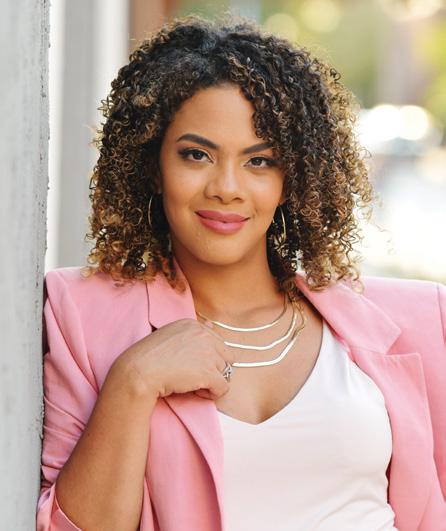
Determined to continue growing professionally, she pursued a master’s degree and, in 2016, earned her Master’s in Clinical Mental Health Counseling from Messiah College. Giannina’s career in mental health began in 2009 at Familicare Counseling Services, where she worked as a Therapeutic Support Staff and later as an outpatient mental health counselor. As an immigrant, she deeply understands the challenges of adapting to a new culture and navigating personal hardships, which allows her to connect with and support a diverse population. Over the years, she obtained specialized training in trauma-informed practices, equipping her to work effectively with individuals healing from trauma.
In 2020, Giannina took a leap of faith and opened New Beginnings Counseling Services, a private practice dedicated to helping individuals struggling with anxiety, depression, trauma, and relationship challenges. While she specializes in trauma therapy, her practice has grown to include a team of highly skilled counselors who share her core values of compassion, inclusivity, and holistic healing.

TUESDAY, NOVEMBER 13, 11:30 A.M.-1 P.M.
Yocum Institute for Arts Education
Join us for one of our signature intergenerational programs, where students are invited to network with established career women in a meaningful, intentional way. This isn’t about collecting business cards—it’s about cultivating authentic connections that support growth, mentorship and leadership across generations.
Our keynote speaker, Rachael Romig, Community Relations Manager at UGI Utilities and former Director of Women2Women, will guide us through Creating Your Beehive—how to nurture circles of influence that empower, uplift, and create lasting impact.
Special Opportunity: A professional photographer will be on-site offering complimentary headshots, perfect for students and professionals alike to strengthen their personal brand.
Whether you’re just starting your journey or already established in your career, this event is about building your hive intentionally—mentors, peers, and champions who keep you inspired and accountable. Together, we’ll create the buzz that fuels innovation, leadership, and community.
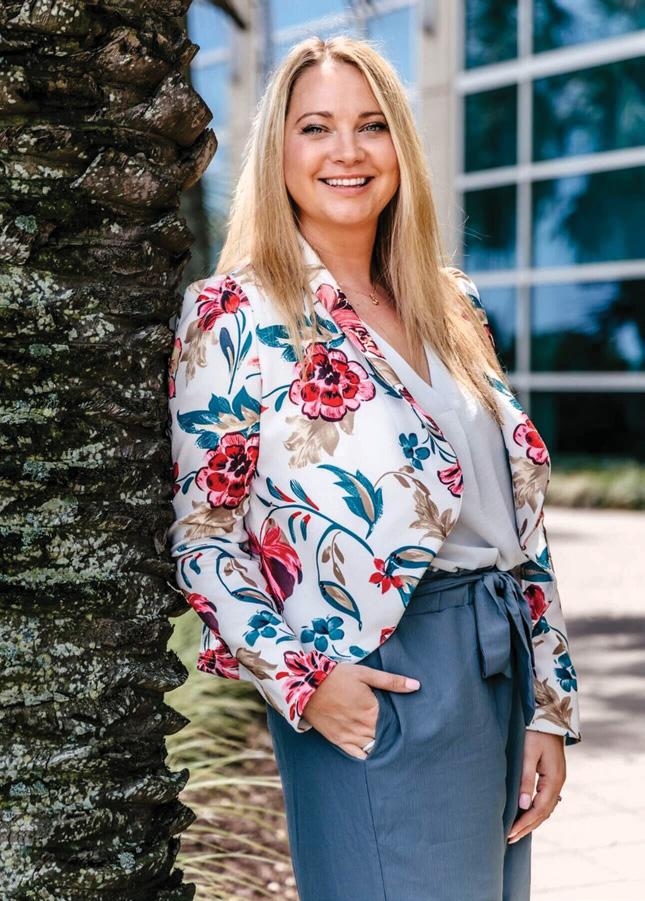
Rachael Romig is the Community Relations Manager at UGI Utilities and owner of Just Breathe. Weddings & Events, a boutique wedding and event planning company. At UGI Rachael leads a team overseeing community and volunteer engagement across UGI Utilities’ service territory in Pennsylvania. As the owner of Just Breathe. Rachael oversees a team of 4 offering day of wedding coordination, nonprofit, corporate and social event planning, and engaging with college students to teach event planning. Just Breathe. primarily serves clients in PA but often travels out of state.

Rachael attended Reading Area Community College and received the Outstanding Alumni Award in 2022. Rachael also received her B.A. from Kutztown University. Her career spans the hospitality industry from catering sales and marketing, event planning and hotel sales, to nonprofit fundraising and community partnerships. Prior to joining UGI Utilities, Rachael was the Development Director for GoggleWorks Center for the Arts. She also spent 6 years as the Senior Director of Events & Special Programs with the Greater Reading Chamber Alliance overseeing, planning, and fundraising for 80+ events, leading a professional women’s network and Family Business Alliance, and overseeing the Workforce and Training departments.
With a passion for helping others, she has also been involved in many local nonprofits including Girls on the Run Berks board member, O’Pake Fellows Program mentor, Berks Women’s History Alliance Centennial committee, United Way of Berks County Summer Learning Coalition and Read.Set.Read! tutor. She is currently the Vice Chair of the Board for Safe Berks. In 2018 she was named a 40 Under 40 from Reading Eagle and again in 2023 from Lehigh Valley Business. She received the 2021 Smart Women in Meetings Rising Star Award from Smart Meetings. Her expertise lies in community connection and engagement, team building, research & strategy, program development, public speaking and being a catalyst for others’ personal and professional growth. She is also the extremely lucky mom of Henrik and Penelope, with her husband, Zach, who has supported her in all endeavors, adventures and silliness.
TUESDAY, DECEMBER 9, 8-9:30 A.M.
Fit4Mom Reading
Motherhood is a journey filled with joy, challenges, and constant change — but one thing remains the same: the need for support. Join Women2Women this December for Mom Life, featuring Amanda Hunter, LCSW, PMH-C, Founder & CEO of Everlasting Wellness LLC. Amanda will lead us in a conversation on the importance of communication throughout all stages of motherhood.
Afterward, we’ll break into small groups based on children’s ages — from toddlers to adults — to share struggles, celebrate successes, and connect with other moms walking a similar path. We’ll close by coming together for a larger discussion, reflecting on experiences, swapping best practices, and lifting each other up.
This program is designed to be a safe, empowering space where moms can build their village, gain fresh perspectives, and be reminded that while every journey is unique, no one has to go it alone. 2


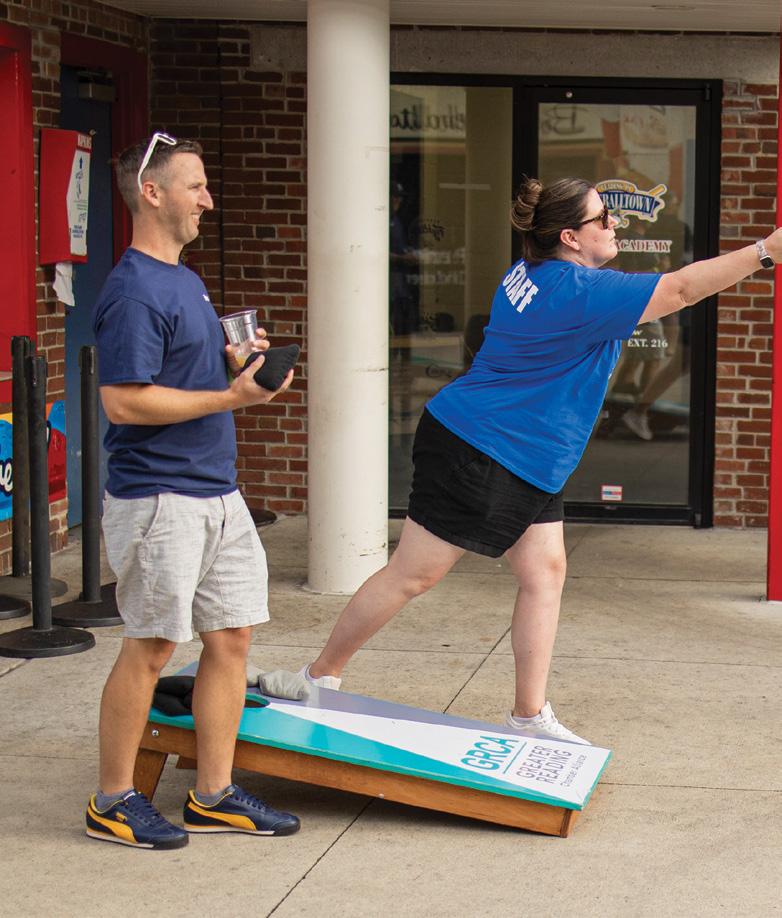
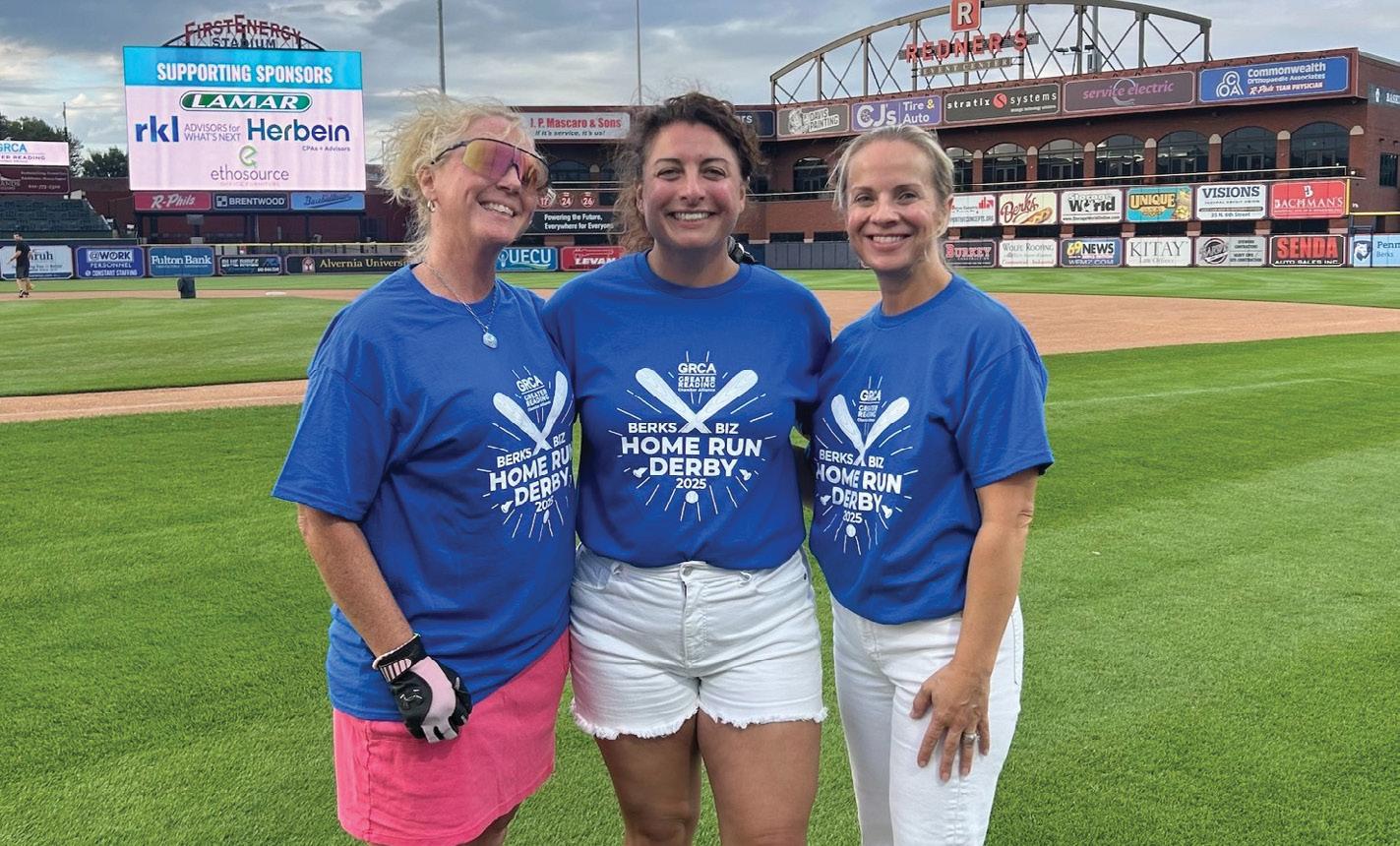




1Samples & discounts galore!: Enjoy complimentary bites, sips and savings throughout November at participating local favorites. Whether you’re indulging in creamy cheeses or craft brews, your Go Taste Berks access unlocks delicious discoveries and discounts at every stop.
2 Digital mapping delight: Say goodbye to paper passports—2025 brings you a sleek, interactive digital map! Get instant access to exclusive deals and real-time directions to Berks County’s top shops, restaurants, wineries and more. Exploring local has never been easier (or more rewarding).
3Powering the local pulse: Every visit supports small businesses in our community. Whether you’re popping into a boutique or grabbing lunch at a hidden gem, you’re fueling Berks County’s vibrant local economy with every taste and toast.
4 Points & prizes: This year’s prize system is digital too—just check in at participating locations to earn points. The more places you explore, the higher your score. At month’s end, the top pointearners will be entered to win one of three grand prizes. No mailin necessary—just your appetite and adventurous spirit!
5 Meaningful connections: From casual chats at coffee counters to networking over wine flights, Go Taste Berks is where connections happen. It’s your chance to meet fellow foodies, local entrepreneurs and community champions —all while discovering your new favorite spots.
NOV. 1 - NOV. 30






